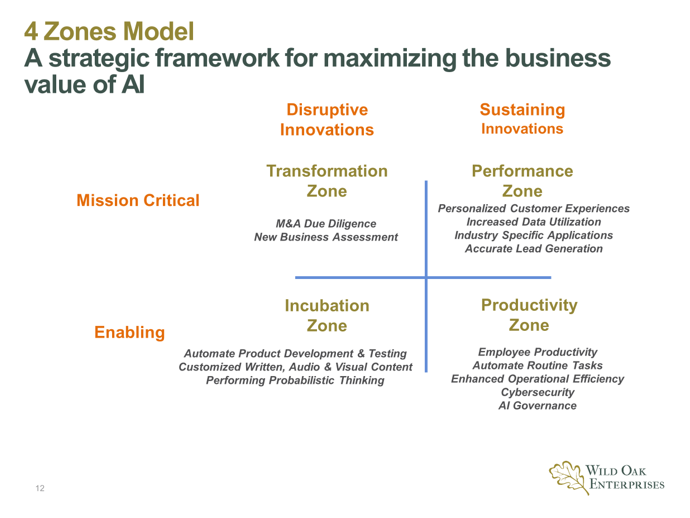
February 27, 2024
In the digital world,
FOMO is not an AI strategy

Is your AI strategy like a dog chasing a car?

A recent Salesforce State of Data and Analytics report documented that 77% of business leaders fear they are already missing out on the benefits of AI and the percentage climbs to 88% for marketing leaders.
IDC’s Worldwide C-Suite Survey 2023-2024 showed that over half of C-suite executives say that generative AI is a top investment priority and 87% said they are exploring potential use cases.
In my earlier blog on AI, (insert link here) I cited a TechRepublic study that showed 85% of AI projects over the past several years had failed to achieve their desired outcomes. The primary sources of failure were the inability to ground AI investments in a solid business value creation strategy.
Too many AI projects are based on the false belief that “if we don’t do something now we will never catch up.” Like most transformative digital technologies, to adopt and deploy them successfully requires a clear understanding of what end result you want them to achieve. It also requires a realistic assessment of what resources and budgets you need to achieve that outcome.
The skills and knowledge required to successfully acquire or develop and run AI programs are not prevalent in most IT teams. This puts a premium on the ability to recruit and hire scarce new AI talent rather than upskilling exisiting personnel.
The scope and speed of new AI developments is far outpacing the AI governance tools necessary to deploy it safely and securely while maintaining customer and employee privacy.
Equinix’s 2023 Global Tech Trends Survey highlighted that 42% of IT leaders say their IT infrastructure is not fully prepared to meet the demands of AI technology.
Where can AI add business value to your organization?
The reason so many AI projects have missed their desired outcomes is because they weren’t in service to solving a specific problem and taking advantage of a specific opportunity. They were mostly about deploying a new technology before anyone really understood what it can do and what kind of organizational and operational preparation you have to have in place to do it.
In my early AI work with clients, we’ve used the 4 Zones Model framework above to identify multiple business value creation needs and opportunities. In each case, we identified a specific business value creation priority and then rigorously explored how AI could enable or enhance its outcome. Here is an initial breakdown of examples by zone:
Productivity Zone Business Value Creation:
– Employee Productivity
- Reduce time on low value work
- Increase time on high value work
– Automate Routine Tasks
- Call center interactions
- Supply chain optimization
– Cybersecurity
- Faster breach detection
- Better vulnerability monitoring
Performance Zone Business Value Creation
– Personalized Customer Experiences
- Individualized customer offers
- Efficient order fulfillment
– Increased Data Utilization
- Real time insights
- Predictive analytics
– Accurate Lead Generation
- Better demand forecasting
- Better product fit analysis
Incubation Zone Business Value Creation
– Automated Product Development & Testing
- Fail fast learn fast
- Increased time to value
– Customized Written, Audio & Visual Content
- Better content customer match
- Higher product & service differentiation
– Performing Probabilistic Thinking
- Comparative software solution analysis
- Scenario planning tool
Transformation Zone Business Value Creation
– M&A Analysis
- Faster and more accurate due diligence
- Better culture fit analysis
– New Business Assessment
- Operating model compatibility
- Organizational compatibility
– Digital Transformation Evaluation
- Zone offense differentiation potential
- Zone defense neutralization potential
Does your data strategy support your AI strategy?

Gartner has estimated that organizations lose on average $12.5 million a year from using poor data. An IBM study calculated that bad data is costing the US economy more than $3 trillion a year. Most of these costs are related to employees within the organization checking and correcting data as it moves through and across departments. IBM believes that half of knowledge workers’ time is wasted on these activities.
As I said in my earlier blog, two of the most common sources of AI project failure are:
- Lack of sufficient quantity of data – AI needs a large amount of good, easily accesible data to be trained to learn from it
- Lack of sufficient quality of data – as the old adage goes “garbage in, garbage out.”
As such, before you even begin to think about how to adopt and deploy AI technology, you need to make sure you have your data house in order and ready to support the expansive needs of AI.
Test and learn before you adopt and deploy
One of the ongoing challenges well established companies have is keeping up with the breadth and development pace of new digital technologies, and which ones are worth investing time and money in. As such, it’s imperative to find a fast and cost-efficient way to create and test potential AI applications that can deliver real business value.
Fortive, a publicly traded manufacturing conglomerate that builds various industrial products for the medical, transportation, and repair markets is trying to keep pace through a partnership with Pioneer Square Labs (PSL), a Seattle based startup studio.
PSL hosted 30 employees from Fortive for a week-long workshop to test out different ideas for generative AI that create “strategic value” for the conglomerate. They were divided into six teams who generated ideas on how to integrate AI into multiple business plans from the different companies within the Fortive conglomerate. As part of the exercise, they gathered customer feedback and developed a specific pitch for each idea. The ideas included:
- AI tools that help electricians navigate complex, location-specific electrical codes
- A tool that helps maintenance companies keep track of their assets and automate managerial duties including automatically sending technicians work orders and updating the system once the work is completed
Building and implementing an effective AI Strategy requires a rigorous discussion about the business value benefits it can bring to your organization and how it can enhance your ability to successfully compete as a digital enterprise. It is not about chasing the brightest new shiny object for fear of missing out.
|





